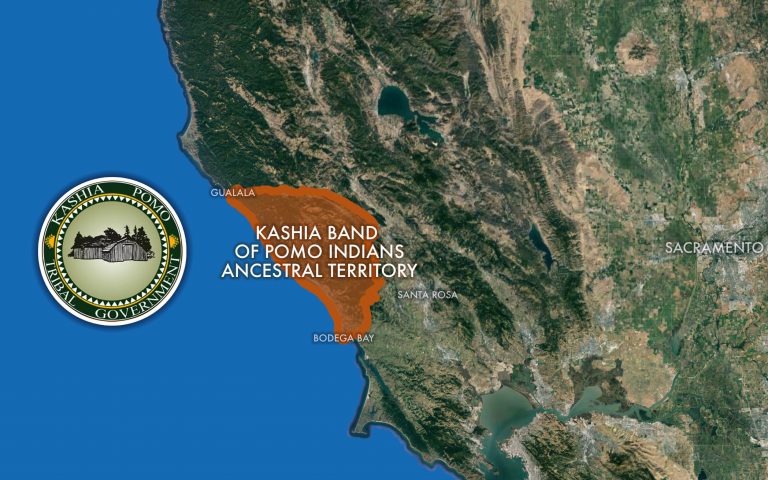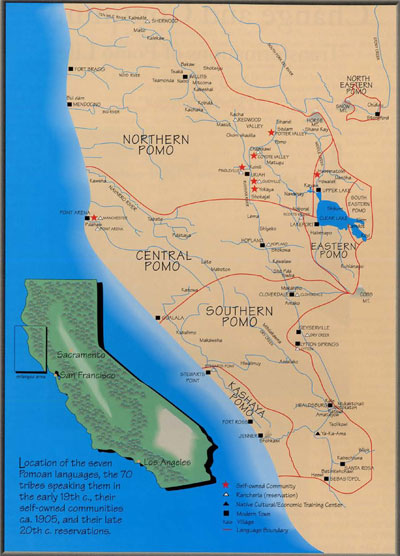
Clear Lake: Where Ancient Echoes Meet Modern Adventure on Pomo Ancestral Lands
The modern traveler often seeks more than just a picturesque view; they crave depth, connection, and a story. Few places offer this rich tapestry quite like Clear Lake, California. As the oldest lake in North America and a vibrant ecosystem, Clear Lake is a destination of remarkable natural beauty. But what truly sets it apart, imbuing every ripple and ancient oak with profound significance, is its enduring legacy as the ancestral homeland of the Pomo people. This isn’t just a place to visit; it’s an opportunity to travel through time, to connect with a landscape shaped by millennia of human ingenuity and spiritual reverence.
Forget the superficial gloss of overcrowded tourist traps. Clear Lake, located in Lake County, invites a different kind of exploration – one rooted in respect, curiosity, and a desire to understand the deep, living history beneath its shimmering surface. Here, the Pomo ancestral lands map isn’t just a cartographic representation; it’s a living guide to a cultural landscape that continues to thrive, offering travelers an unparalleled opportunity to engage with indigenous heritage while enjoying the stunning outdoors.
A Lake Forged by Time and Tradition: The Pomo Legacy

To understand Clear Lake is to understand the Pomo. For over 12,000 years, various bands of the Pomo people, including the Eastern, Southeastern, and Northern Pomo, have called these fertile shores home. They are, quite literally, "the people of the Clear Lake," and their intricate relationship with this land is woven into its very fabric. The lake provided an abundance of fish – especially the native Clear Lake hitch, a vital food source – while the surrounding oak woodlands offered acorns, and the marshy areas yielded tule reeds, crucial for shelter, canoes, and their world-renowned basketry.
The Pomo did not merely inhabit this land; they managed it with sophisticated ecological knowledge. They practiced controlled burns to promote healthy plant growth, ensured sustainable harvesting of resources, and maintained a delicate balance with the environment. Their spiritual beliefs were deeply intertwined with the landscape, with features like Mount Konocti, the towering volcanic peak overlooking the lake, holding immense sacred significance as a place of creation and spiritual power.
Today, while the landscape has seen changes brought by colonization and development, the Pomo presence remains strong. Several federally recognized Pomo tribes and bands continue to reside in Lake County and the surrounding regions, actively preserving their language, traditions, and the deep connection to their ancestral lands. A visit to Clear Lake, therefore, is an invitation to acknowledge and respect this enduring legacy, to see the lake not just as a recreational playground, but as a cultural heartland.
Experiencing Clear Lake Today: Adventure with Purpose

Clear Lake offers a diverse range of activities that cater to every type of traveler, from the avid angler to the history buff, the nature enthusiast to the family seeking a peaceful retreat.
On the Water: As the largest natural freshwater lake entirely within California, Clear Lake is an aquatic paradise. Its shallow, warm waters are a haven for bass fishing, attracting tournaments and enthusiasts from across the nation. Beyond fishing, the lake is perfect for:
- Boating: From powerboats to sailboats, the expansive waters provide ample room for cruising, waterskiing, and tubing.
- Kayaking and Paddleboarding: Explore the quieter coves, glide through the ancient tule reeds, and discover hidden channels. This is an excellent way to connect with the lake’s more serene side, perhaps imagining Pomo canoes navigating these very waters millennia ago.
- Swimming: With numerous public beaches and state park access points, the lake offers refreshing dips during the warmer months.

Nature and Wildlife: Clear Lake is a designated Important Bird Area, teeming with a staggering variety of avian life. Birdwatchers will be captivated by:
- Migratory Birds: In fall and winter, thousands of waterfowl, including various duck species, geese, and pelicans, descend upon the lake.
- Resident Raptors: Keep an eye out for bald eagles, ospreys, and hawks soaring above the lake and surrounding hills.
- Unique Ecosystems: The extensive tule marshes are critical habitats for many species and offer a glimpse into the raw, untamed beauty that has characterized the lake for millennia.

Hiking and Exploring the Land: The areas surrounding Clear Lake offer fantastic opportunities for land-based exploration, often leading to breathtaking views and a deeper connection to the Pomo landscape.
- Mount Konocti: Dominating the eastern shore, Mount Konocti is an extinct volcano and a sacred Pomo site. Hiking its trails offers panoramic views of the lake and the surrounding region, allowing visitors to appreciate the scale of the ancestral lands. The Konocti Regional Trails provide various routes for different fitness levels.
- Clear Lake State Park: Located on the southwestern shore, the park offers camping, picnicking, and trails that wind through oak woodlands and along the lake’s edge. Interpretive signs often touch upon the Pomo history of the area.
- Anderson Marsh State Historic Park: This park is a jewel for cultural and natural history enthusiasts. It preserves a significant archaeological site with evidence of continuous Pomo occupation for thousands of years. The park features interpretive trails, a historic ranch house, and opportunities to learn about the Pomo people’s deep connection to the marshlands, a prime source for their basketry materials and food.
Engaging with Pomo Culture and History: A Deeper Dive
To truly honor the "Pomo ancestral lands map," it’s essential to move beyond passive observation and actively seek opportunities to learn and engage.
- Visit Anderson Marsh State Historic Park: This park is arguably the best starting point for understanding Pomo history in the area. Its archaeological significance and focus on interpreting indigenous life provide invaluable context. Look for guided tours or special events that might delve deeper into Pomo culture.
- Seek out Local Museums: While a dedicated Pomo museum might be found in other areas, local museums in Lake County (such as the Lakeport Historic Courthouse Museum) often have exhibits detailing Pomo history, artifacts, and the impact of colonization.
- Pomo Basketry: Keep an eye out for opportunities to learn about or view Pomo basketry. These baskets are not just utilitarian objects; they are intricate works of art, imbued with cultural meaning and representing an unbroken lineage of skill and knowledge passed down through generations. While direct purchasing from Pomo artists might require specific events or galleries, understanding the craft’s significance enriches your visit.
- Responsible Tourism and Land Acknowledgement: When visiting any part of Clear Lake, take a moment to acknowledge that you are on the ancestral lands of the Pomo people. Learn about the specific Pomo tribes in the area you are visiting (e.g., Robinson Rancheria, Big Valley Rancheria, Elem Indian Colony) and respect their ongoing sovereignty and cultural practices. Support local businesses, including those owned by indigenous people, whenever possible.
Planning Your Journey to Clear Lake
- Best Time to Visit: Clear Lake offers year-round appeal. Spring brings wildflowers and active birdlife. Summer is ideal for swimming and boating, though it can get warm. Fall offers pleasant temperatures, vibrant foliage, and excellent fishing. Winter is peaceful, perfect for birdwatching and enjoying the serene beauty of the lake.
- Accommodation: You’ll find a range of options, from charming lakeside resorts and vacation rentals to campgrounds within Clear Lake State Park and other private RV parks.
- Getting There: Clear Lake is easily accessible by car, typically a 2-3 hour drive north of the San Francisco Bay Area.
- Sample Itinerary (3 Days):
- Day 1: Arrival & Lakeside Immersion: Arrive in Lakeport or Kelseyville, check into your accommodation. Spend the afternoon boating, kayaking, or swimming. Enjoy a sunset dinner overlooking the lake.
- Day 2: History, Culture & Views: Morning visit to Anderson Marsh State Historic Park for a deep dive into Pomo history and a nature walk. In the afternoon, hike a portion of Mount Konocti for breathtaking views. Enjoy local wine tasting (Lake County is an emerging wine region) or explore the charming shops of a lakeside town.
- Day 3: Wildlife & Reflection: Take an early morning birdwatching excursion. Enjoy a final lake activity – perhaps a fishing trip or a leisurely paddle. Before departing, visit Clear Lake State Park for a picnic and a final moment of reflection on the ancient beauty surrounding you.
A Call to Conscious Travel
Visiting Clear Lake is more than just a vacation; it’s an opportunity for conscious travel. It’s about recognizing the deep history of a place, understanding the enduring presence of its original inhabitants, and appreciating the intricate connection between people and land. By choosing to explore Clear Lake, you are not just enjoying its natural splendor; you are stepping onto a living map of Pomo ancestral lands, contributing to a narrative that celebrates resilience, culture, and the timeless beauty of a truly unique California gem. Come with an open mind and a respectful heart, and Clear Lake will reveal stories that resonate long after you’ve left its ancient shores.


